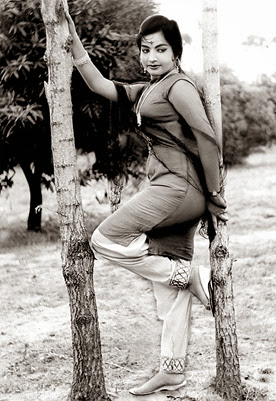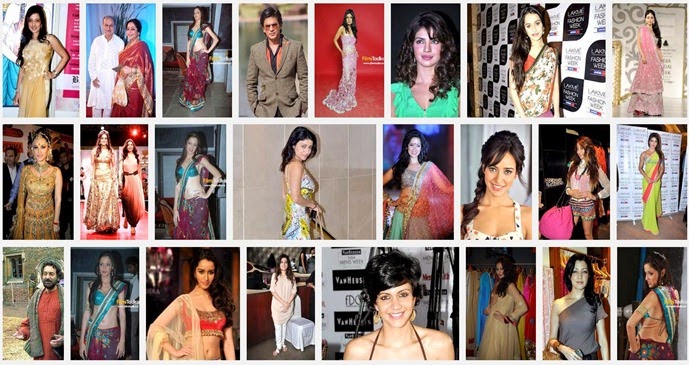Fashion In India
India is a country with an ancient clothing design tradition, yet an emerging fashion industry. Though a handful of designers existed prior to the 1980s, the late 80s and the 1990s saw a spurt of growth. This was the result of increasing exposure to global fashion and the economic boom after the economic liberalization of the Indian economy in 1990. The following decades firmly established fashion as an the industry, across India
Post-independence: Ethnic revival and Bollywood fashion
History of clothing in India, dates back of ancient times, yet fashion in a new industry, as it was the traditional Indian clothings with regional variations, be it sari, ghagra choli or dhoti, that remained popular till early decades of post-independence India. A common form of the Indian fashion originates from the Western culture. Fashion includes a series of sequins and gold thread to attract customers and apply a statement to the Indian fashion community. A famous Indian fashion trademark is embroidery, a art of sewing distinct thread patterns. A way to include the traditional look and create a new fashion statement includes embroidery applied to different dresses, skirts, shirts, and pants to reflect the western culture influence as well as include the Indian tradition. As a part of larger revival movement in the Indian textile industry, Ritu Kumar, a Kolkata-based designer and textile print-expert started working on reviving the traditional hand block printing techniques of Bengal, and making it a part of the fashion industry, established "ethnic chic". She opened her first boutique in Delhi in 1966. In 1973, she first showcased the Zardozi embroidery in his garments, which had its origins in the royal costumes dating back to the Mughal era. This led to the revival of this lost art. In time embroidery became prominent feature of Indian wedding attires, and also one of the biggest fashion exports.[3][4] This was period of revival, where various organisations, NGOs and indicuals were involved in reviving traditional Indian techniques, in weaving, prining, dyeing or embroidery, including ikat, patola (double-ikat), bandhani (tie & dye) and shisha (mirror embroidery).
An early trendsetter in fashion was Bollywood (Hindi cinema), where costume designers like Bhanu Athaiya, started experimenting with film fashion in the 1960s. Athaiya started working on period costumes in Sahib Bibi Aur Ghulam (1962) and Amrapali (1966), though went on to introduce varied trends through Teesri Manzil (1966), Chalte Chalte (1976), Karz (1980) and Chandni (1989). These were soon followed by the mass market. Also situations and themes in Indian cinema became westernised making way for the display of diverse fashion. Over the years, popular Bollywood trends have been the Madhubala's Anarkali-look with kurtas and churidars in Mughal-e-Azam (1960), purple embroidered sari worn by Madhuri Dixit in Hum Aapke Hain Koun...! (1994), to Rani Mukherji's short kurti-suits in Bunty Aur Babli (2005), Veer Zaara suits and blouses from Parineeta. This comes besides various fashion interpretation of the sari in films like Chandni (1989) with Sridevi, Main Hoon Naa (2004) with Sushmita Sen and Dostana (2008) with Priyanka Chopra, which became fashion trends.
However, in the recent decades, with increasing exposure to the West, its influence is no longer as strong as in the previous decades, by the 2000s, with rise in Indian diaspora around the world and the non-resident Indians, Bollywood continues to exert far greater influence on the fashion sensibilities amongst Indians around the world.
Post-1990s boom
By early 1980s, the first generation of Indian fashion designers started cropping up, including Satya Paul. However, it was Rohit Khosla (1958–1994), who became a pioneer in fashion industry, when we founded co-founded Ensemble" in 1987, with Tarun Tahiliani, Abu Jani-Sandeep Khosla and others. Though, the "Anarkali-style" has been around ever since, it was first popularized after Mughal-e-Azam (1969), it was Abu Jani-Sandeep Khosla, who inspired by costumes of Mughal courtesans and Meena Kumari's costumes in Pakeezah (1975), introduced the floor-length Anarkali-style of churidaar-kurta in 1988, which soon became the Indian version of the ball gown. In 1986, Ministry of Textiles, Government of India opened the National Institute of Fashion Technology (NIFT) in Delhi with the help of the Fashion Institute of Technology, New York. It played an important role in bringing in locally trained fashion designers. By 2010, it had developed 15 branches across India, and smaller private fashion institutions had also developed.in 1991 The Apparel Training and Design Centre has intiated by Ministry if Textiles to empower the shop floor Vocational Training
Soon in 1990, economic liberalization of the Indian economy took place, which also propelled the fashion industry. In the coming decade, fashion industry experienced a boom, both in terms of volume and trends. Designer Suneet Varma, inspired by his corsetry-training in France, introduced indo-western, metal breast plate, followed by the "Corset blouse" in 1992, made with satin, polyester taffeta or stretch lace, it was designed to replace the traditional choli, or Indian-blouse worn with a sari. In the its early years, the 1980s, Indian designer largely focussed on haute couture, however in the next decade saw a growth in the domestic retail industry, as well as an influx outsourced garment business from the western countries. This meant better quality and larger manufacturing facilities available locally. Together, these reason spurred many Indian designers to start their prêt-à-porter (ready-to-wear) lines
"God-printed T-shirts" were introduced by Manish Arora in 1997, along with Indian kitsch and street art in saturated colours on to fashionwear.Another important reinvention was made in 1998 by Monisha Jaisingh, who shortened the traditional kurta to develop, the kurti, and became popular worldwide as "Indian embroidered tunic". Also in the same year, Fashion Design Council of India was established, which later started the India Fashion Week in Delhi, to promote Indian designers and manufacturers. In 2000, another Bollywood costume designer, Manish Malhotra became an important influence on Indian fashion. Having designed the trendy looks for actresses Urmila Matondkar in Rangeela (1995) and Karisma Kapoor in Raja Hindustani (1996), introduced the "cocktail sari" in 2000. Using pastel colours, and fabrics like chiffon, satin or net, it revived the traditional sari in a modern avatar. He was in turn inspired by the popular Bollywood saris of the ’1960s and the chiffon saris worn by actress in Yash Chopra films, like Chandni (1989). This also started another era of Bollywood fashion influence and its collaboration with leading designers, besides leading actor and actresses occasionally walking the ramp for some designers.
By 2009, the Indian fashion industry, despite the ongoing recession, was worth INR2.9 billion (US$48 million).[12] Also in the same year, Manish Arora, known for his quirky-kitsch, became the first Indian designer to participate in the Paris Fashion Week.
Source: Wikipedia






EmoticonEmoticon